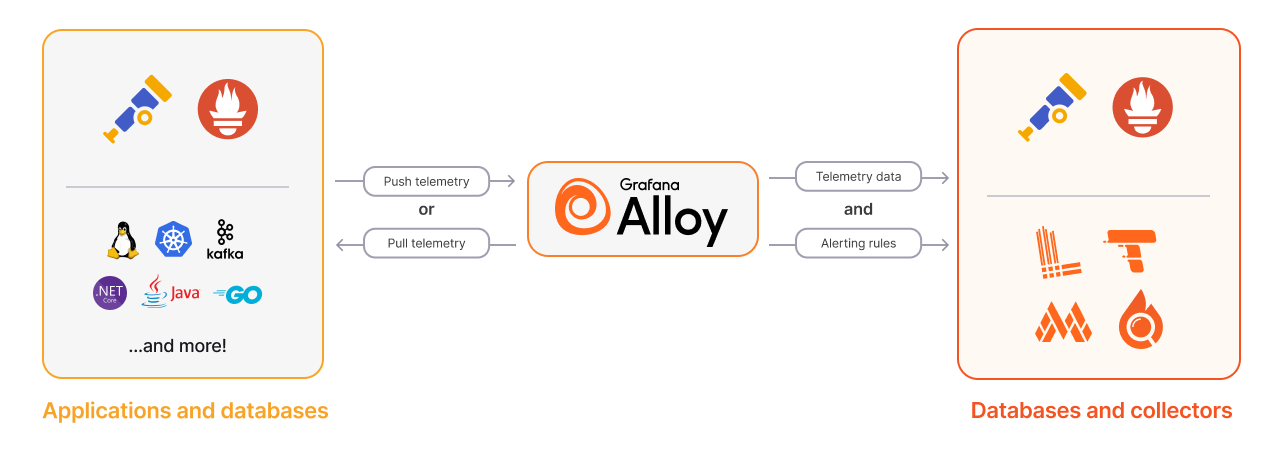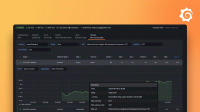Introduction to Grafana Alloy
Alloy is a flexible, high performance, vendor-neutral distribution of the OpenTelemetry (OTel) Collector. It’s fully compatible with the most popular open source observability standards such as OpenTelemetry (OTel) and Prometheus.
Alloy focuses on ease-of-use and the ability to adapt to the needs of power users.
Key features
Some of the key features of Alloy include:
- Custom components: You can use Alloy to create and share custom components. Custom components combine a pipeline of existing components into a single, easy-to-understand component that’s just a few lines long. You can use pre-built custom components from the community, ones packaged by Grafana, or create your own.
- Reusable components: You can use the output of a component as the input for multiple other components.
- Chained components: You can chain components together to form a pipeline.
- Single task per component: The scope of each component is limited to one specific task.
- GitOps compatibility: Alloy uses frameworks to pull configurations from Git, S3, HTTP endpoints, and just about any other source.
- Clustering support: Alloy has native clustering support. Clustering helps distribute the workload and ensures you have high availability. You can quickly create horizontally scalable deployments with minimal resource and operational overhead.
- Security: Alloy helps you manage authentication credentials and connect to HashiCorp Vaults or Kubernetes clusters to retrieve secrets.
- Debugging utilities: Alloy provides troubleshooting support and an embedded [user interface][UI] to help you identify and resolve configuration problems.
How does Alloy work as an OpenTelemetry collector?

Collect
Alloy uses more than 120 components to collect telemetry data from applications, databases, and OpenTelemetry collectors. Alloy supports collection using multiple ecosystems, including OpenTelemetry and Prometheus.
Telemetry data can be either pushed to Alloy, or Alloy can pull it from your data sources.
Transform
Alloy processes data and transforms it for sending.
You can use transformations to inject extra metadata into telemetry or filter out unwanted data.
Write
Alloy sends data to OpenTelemetry-compatible databases or collectors, the Grafana LGTM stack, or Grafana Cloud.
Alloy can also write alerting rules in compatible databases.
Next steps
- Install Alloy.
- Learn about the core Concepts of Alloy.
- Follow the tutorials for hands-on learning about Alloy.
- Learn how to collect and forward data with Alloy.
- Check out the reference documentation to find information about the Alloy components, configuration blocks, and command line tools.



